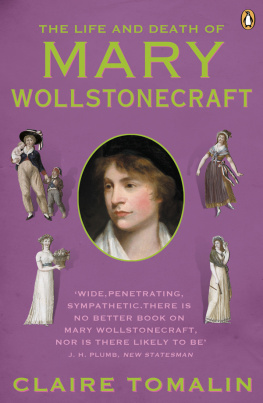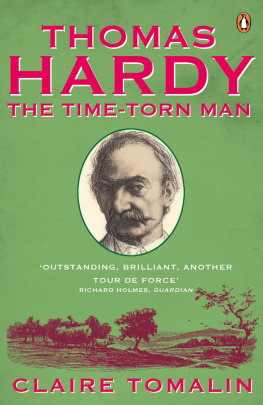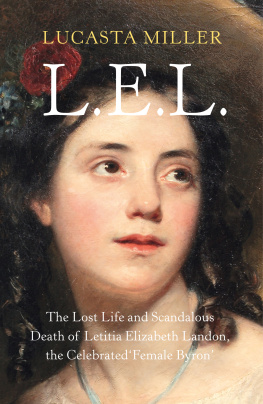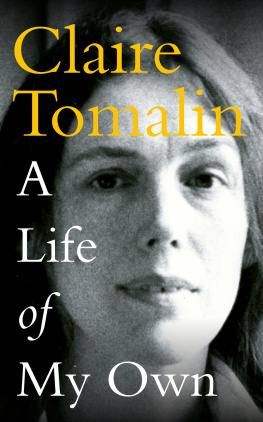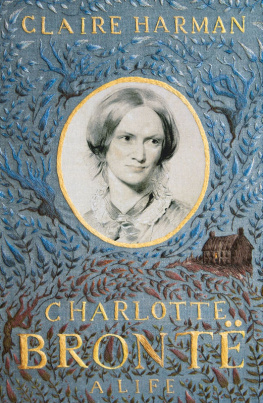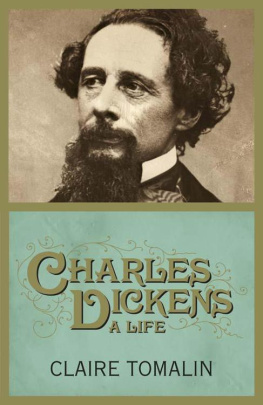PENGUIN BOOKS
SEVERAL STRANGERS
Claire Tomalin has worked in publishing and journalism all her life. Her books include The Life and Death of Mary Wollstonecraft, which won the Whitbread First Book Prize for 1974; The Invisible Woman: The Story of Nelly Ternan and Charles Dickens, which won the NCR Book Award, the Hawthornden Prize and the James Tait Black Memorial Prize for Biography; Mrs Jordans Profession, about nineteenth-century British actresses; the highly acclaimed Jane Austen: A Life; and, most recently, Several Strangers, a collection of writing from three decades. Her books have been widely translated and she is currently working on a biography of Samuel Pepys. She lives in London with her husband, Michael Frayn
SEVERAL STRANGERS
Writing from Three Decades
CLAIRE TOMALIN

PENGUIN BOOKS
PENGUIN BOOKS
Published by the Penguin Group
Penguin Books Ltd, 80 Strand, London WC2R 0RL , England
Penguin Putnam Inc., 375 Hudson Street, New York, New York 10014, USA Penguin Books
Australia Ltd, 250 Cambcrwell Road, Camberwell, Victoria 3124, Australia
Penguin Books Canada Ltd, 10 Alcorn Avenue, Toronto, Ontario, Canada M4V 3B2
Penguin Books India (P) Ltd, 11 Community Centre, Panchsheel Park, New Delhi 110 017, India
Penguin Books (NZ) Ltd, Cnr Rosedale and Airborne Roads, Albany, Auckland, New Zealand
Penguin Books (South Africa) (Pty) Ltd, 24 Sturdee Avenue, Rosebank 2196, South Africa
Penguin Books Ltd, Registered Offices: 80 Strand, London WC2R 0RL , England
www.penguin.com
First published by Viking 1999
Published in Penguin Books 2000
3
Copyright Claire Tomalin, 1969,1971,1974,1975,1976,1977,1978,1979,1981,1987,
1988,1989,1990,1991,1992,1993,1994,1995,1996,1998,1999
All rights reserved
The moral right of the author has been asserted
Except in the United States of America, this book is sold subject to the condition that it shall not, by way of trade or otherwise, be lent, re-sold, hired out, or otherwise circulated without the publishers prior consent in any form of binding or cover other than that in which it is published and without a similar condition including this condition being imposed on the subsequent purchaser
ISBN: 978-0-14-190950-9
Contents
PART ONE
APPRENTICESHIP
PART TWO
LITERARY EDITOR
PART THREE
WRITER
PART ONE
APPRENTICESHIP
Collecting reviews from three decades has brought me face to face with several strangers who went by my name. Jane Austen was right when she wrote, Seven years are enough to change every pore of ones skin, and every feeling of ones mind. I started my working life in publishing with only a vague sense of where I was going or what I wanted to do. This changed as I was launched into journalism and literary editing, where I felt I found my natural habitat and friends. I moved to the Sunday Times, and it turned into a battlefield. Finally I became a full-time writer, solitary and obsessive as most writers are.
The thread that has persisted through these separate lives has been reviewing. The first books I chose for myself were connected with womens history and domestic themes. I got the books mostly because no one else wanted them. Since then the sideline has moved closer to the centre. At the time my own first book appeared, in 1974, a publisher friend said with weary condescension, Not another book about the bluestockings? He was a man, of course. Today both sexes are running publishing firms, and male historians are as interested as women in marriage, divorce and children, and in the interaction of public and private lives. Womens history has stopped being a sideline.
Looking up old work has meant thinking back over my career, and made me realize how inseparable work and personal experience have been. I was thirty-five half way through life, we used to think when I wrote the earliest review in this collection. What held me up for so long? And how did I ever start? The introductions to the reviews offer answers to these questions, and give some account of how a woman of my generation found herself embarked on a literary life.
I was twenty-one when I took my degree at Cambridge and found a room in London. It was a basement in the house of the artist Roger Hilton, in Shepherds Bush, for which I paid 2 a week. My walls were hung with his abstract paintings; the sound of his wife Ruths violin filtered down, and I babysat for their two small children. There was also a good deal of wild life. My kitchenette in the old coal hole was haunted by giant spiders, and when the cat gave birth to kittens in the back room a ferocious tom, their father we supposed, came in through the window and tore the little ones to shreds. But neither spiders nor murdering cats dented my happiness for long. I was in love with Nick, also just down from Cambridge, and he was living in a room round the corner, in a house belonging to another artist, Patrick Heron.
This was the summer of 1954. I had gone through three years reading English without much thought of the future. I was an innocent, dreamy, not to say dozy, and there was full employment. I had been writing poetry from the age of seven, and although some of my verses appeared in undergraduate magazines, and one poem in Karl Millers Poetry from Cambridge, I did not connect this with the world of careers. I meant to find myself a serious job, but knew I did not want to be a teacher, a civil servant or anything in the theatre. I could not imagine writing fiction, and did not even think of journalism then, because newspapers seemed so masculine, and I had a low opinion of womens magazines.
My father pronounced that shorthand and typing were always useful to women, and offered to put me through a secretarial training course. I took it, and afterwards applied to the B B C : I was bilingual in French, with good secretarial skills, and a First, but the response was a short letter informing me that the competition for General Trainees is confined to men. (I still have the letter.) I wrote to Time and Tide, was interviewed and turned down again, quite rightly, because it was obvious I had not read the magazine. Then my father mentioned me to someone he knew in publishing, and I found myself invited for an interview with an editor at Heinemann.
The Heinemann offices were at No. 99 Great Russell Street, a steep-staired Georgian house almost next door to the British Museum. Three flights up, through an outer office and I was in a very small room where a thin fair-haired man with a quizzical face just fitted behind his desk. His name was Roland Gant, and he would be my boss if I got the job. A few minutes into the interview a younger man, thick-set and wearing heavy glasses, came in without a word and put a piece of paper on Rolands desk. He was James Michie, the poet, and he had been in the outer office as I walked through. Later he told me he had been awarding me marks for my looks. Seven out of ten, he gave me, just enough for the job of secretary/editorial assistant, at 5.10s. a week. This was how things were done in 1954.
My desk was in the outer office, where sacks of manuscripts were dumped every day. Roland and James looked through them and decided who should read what. One of my tasks was to pack them up again for Mrs Tegan Harries, a reader who never appeared in person. From her rasping telephone voice I imagined her as a county lady down on her luck, cigarette dangling over the typewriter as she tapped out her reports in triplicate. The other reader was Moira Lynd, who did come in, from Hampstead, and took books away with her. She was a charming woman, combining political opinions of the extreme left with a good nose for a best-seller. She had refused to learn to type for fear of being given the sort of work I was expected to do, and she wrote out her reports by hand in the office on Wednesdays. Each line sloped more sharply as her pen travelled down the page, so that there was always a large gap in the bottom right-hand corner. Some of the novels that came in were still handwritten too. They were not viewed with favour, but we read them.
Next page

